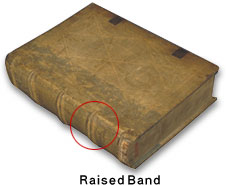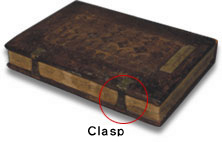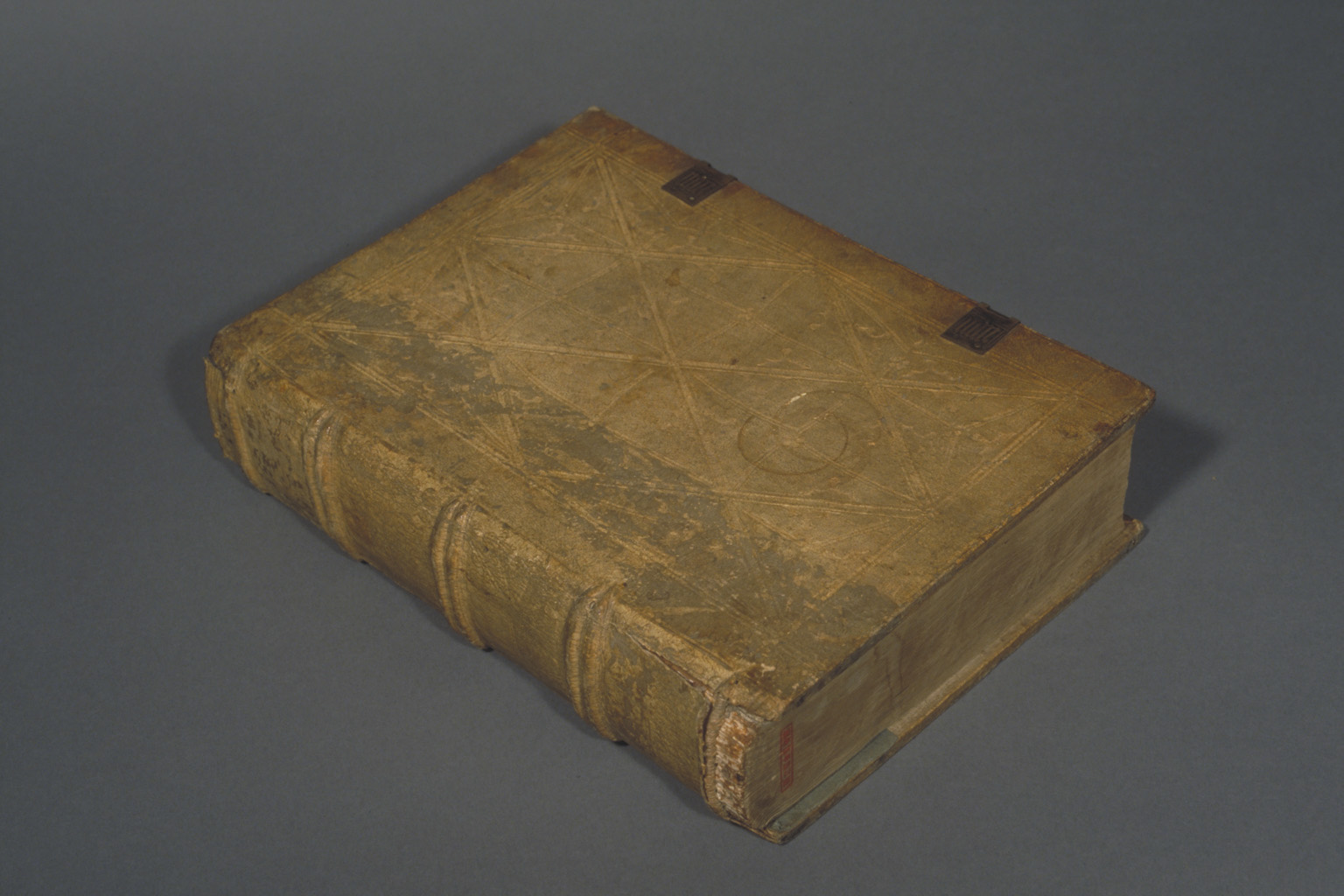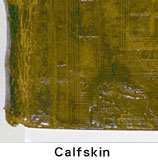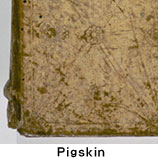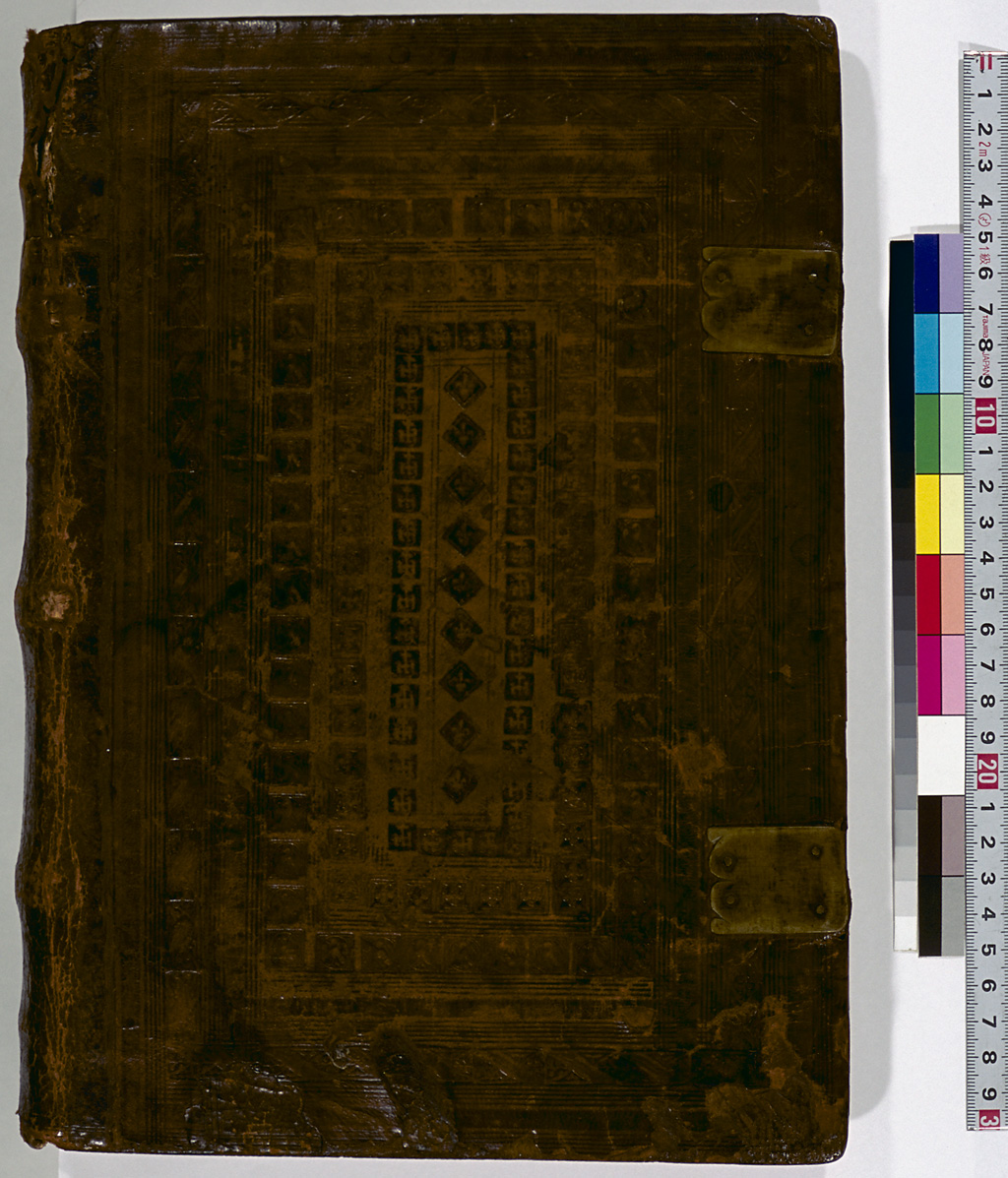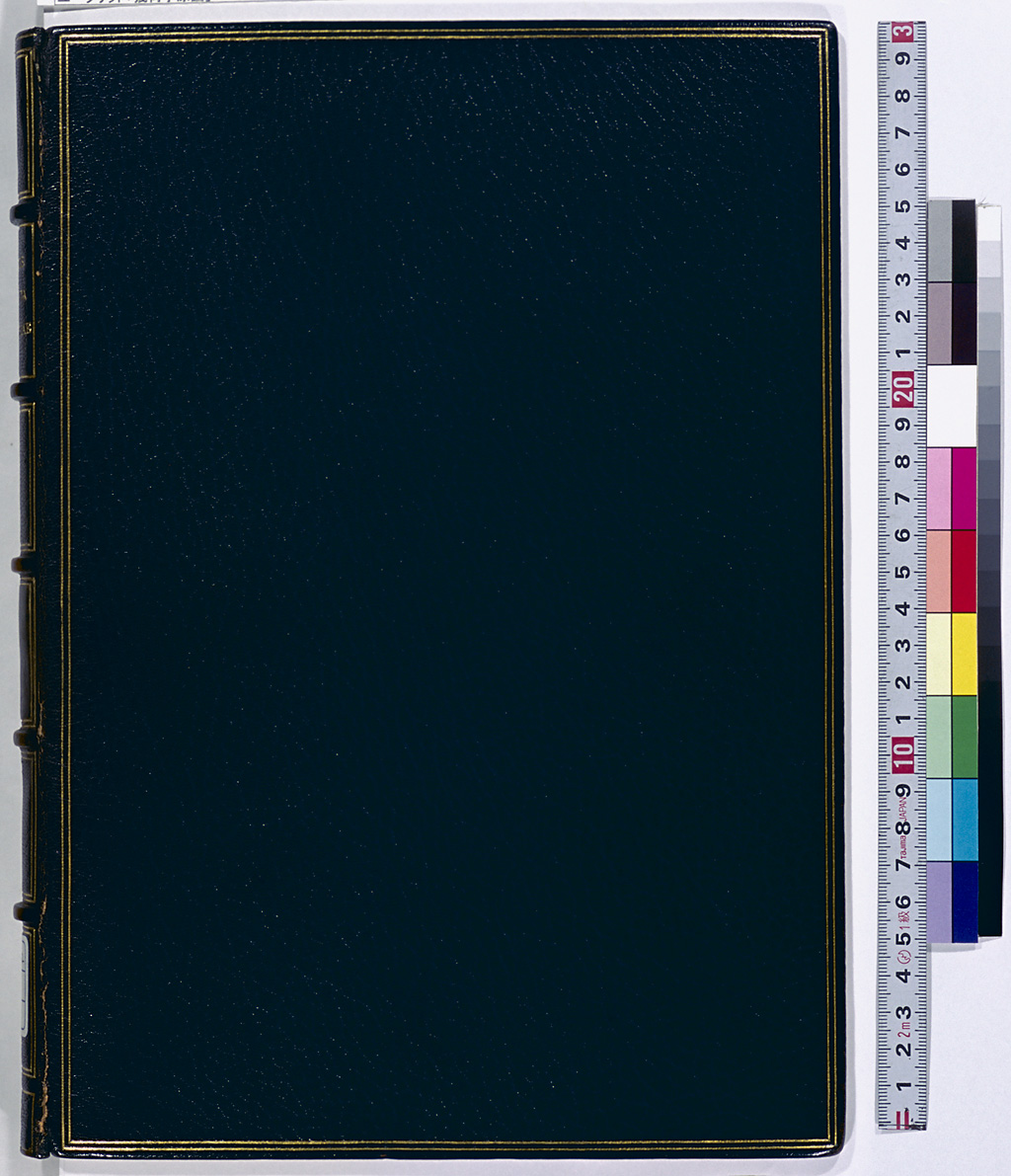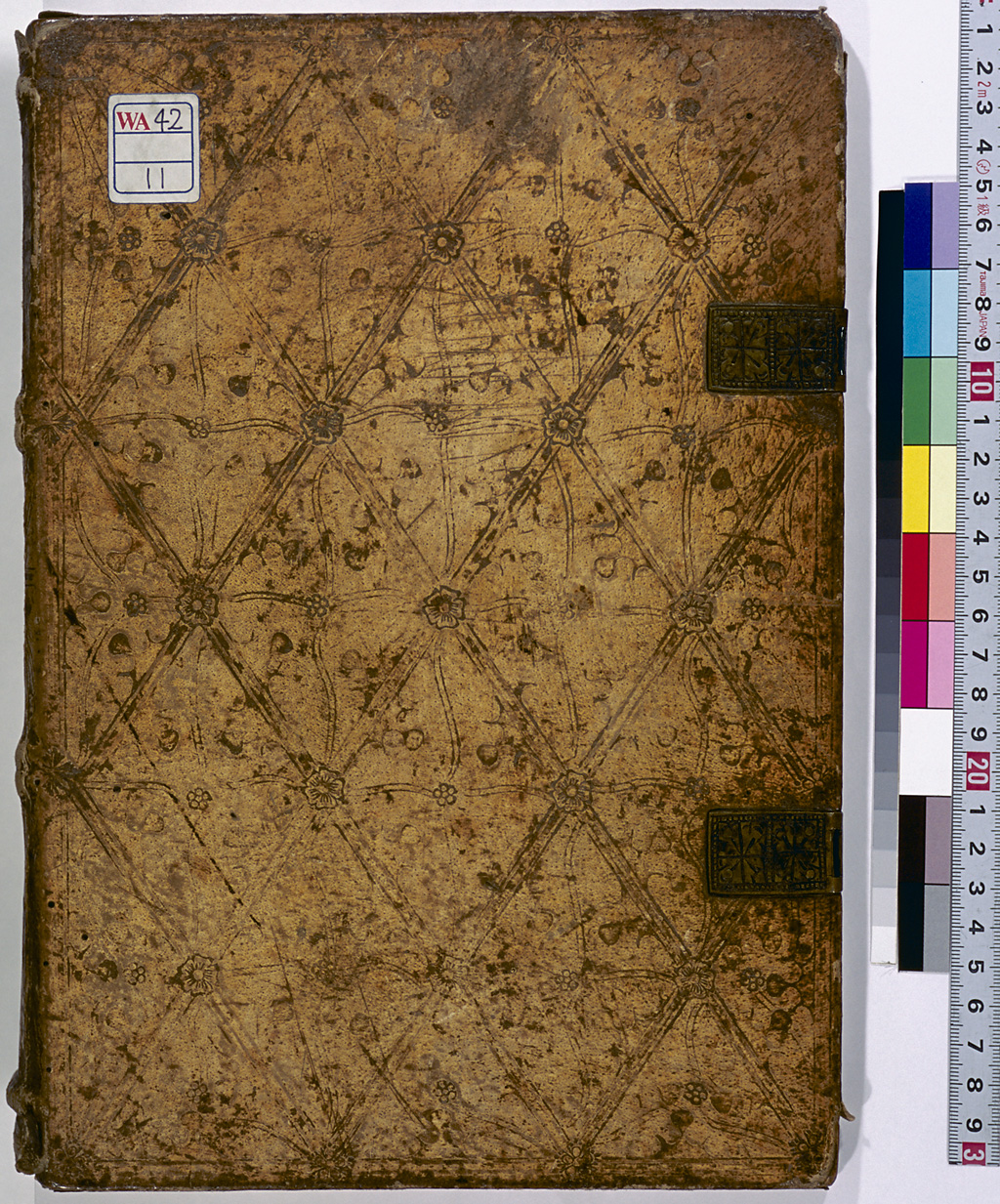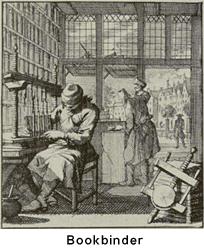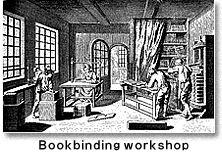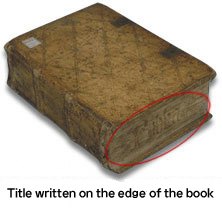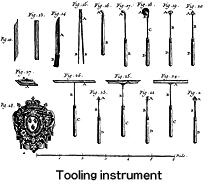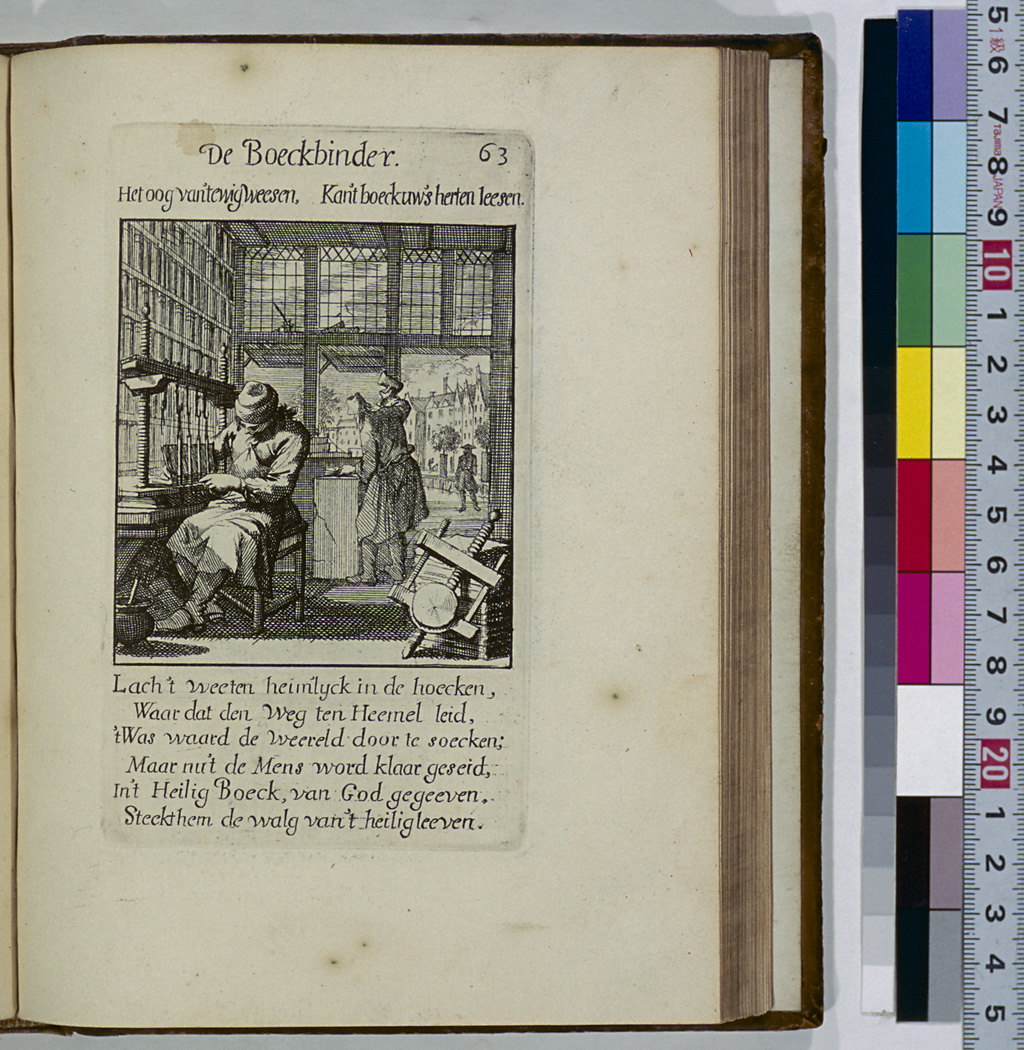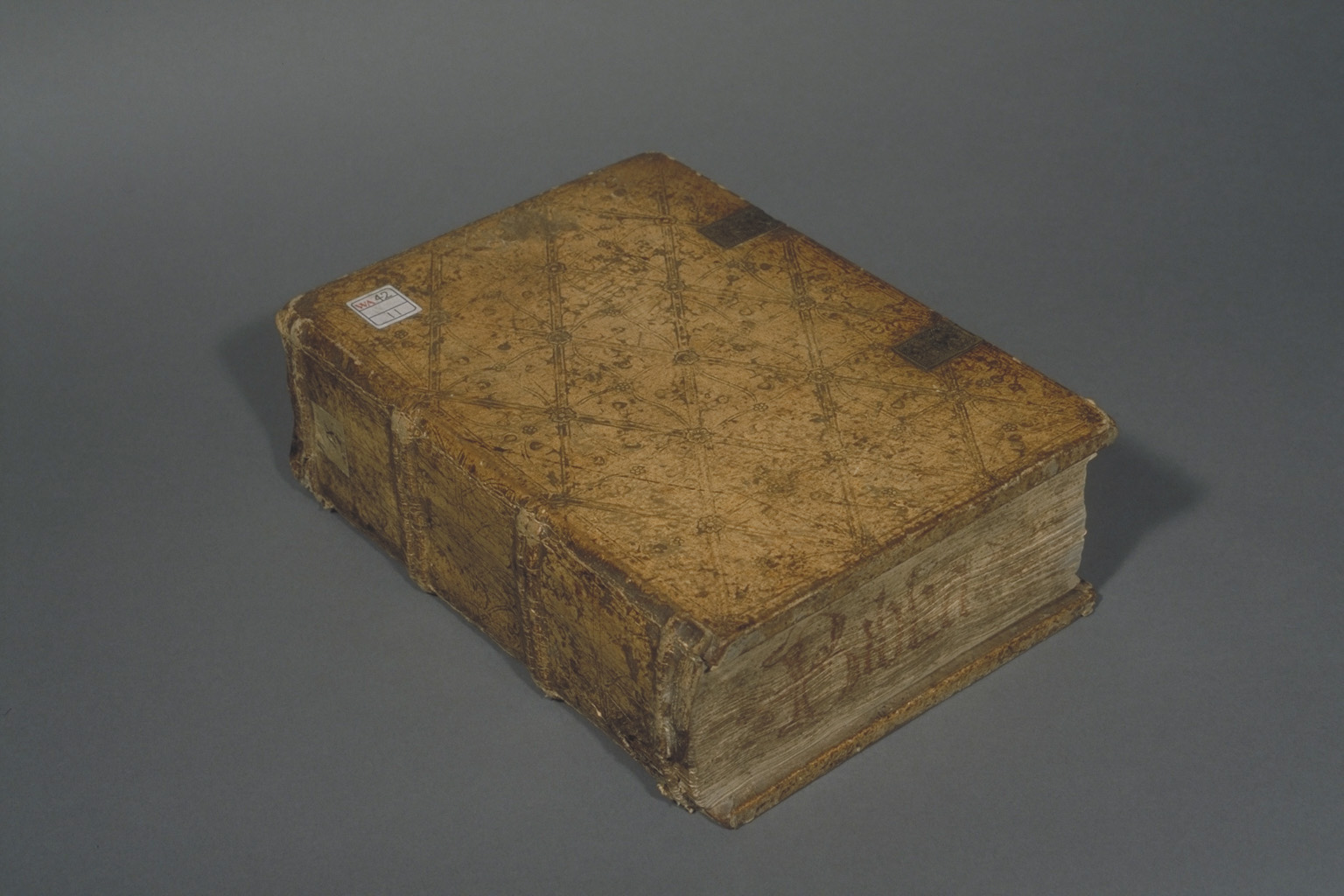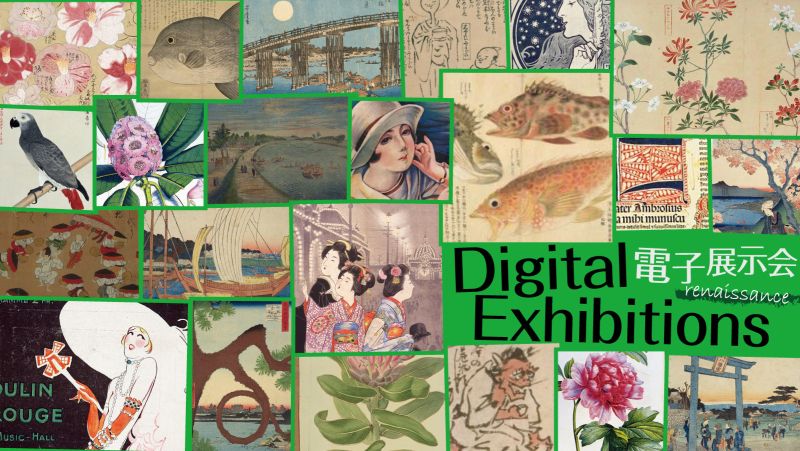Chapter 4
Bookbinding and Decoration
It is believed that the form of books changed from scroll to codex in the second half of the 4th century. Cassiodorus, a politician and learned priest of the 6th century, already referred to bookbinding in his book Institutiones (book1, chap.30). The bookbinding technique in use at that time is called the "Coptic bindings." The bookbinding technique used in the incunabula period had been established during the Age of Charlemagne or the Carolingian Dynasty in the 8th to 9th centuries, and it made books more solid and sturdier than those bound by the Coptic method. The distinctive feature of the method developed during the 8-9th century is that the quires are bound and fixed to a support called a "raised band." Books bound in this way have raised ribs across their spines. Since medieval manuscripts were written on animal skin, they easily became warped or lined with wrinkles easily. To prevent this from happening and to keep the books shut tight, they sometimes put heavy covers and even metal clasps on them. In those days books were usually kept flat on their front/back covers. Thus they sometimes attached bosses to the four corners or the center of the leather cover so that it did not come into direct contact with the floor. As paper came to replace animal skin as the material for books, such heavy bookbinding methods became unnecessary. A look at the incunabula bound using the old methods indicates, however, that such a solid and sturdy bookbinding method was still being used in the second half of the 15th century.
The skins of sheep, goat, cow, calf and pig were used for the cover. Green skin or hide was fermented, hair was removed and fat was taken away by rubbing with stone or metal. The skin was then dressed to make parchment for use in transcription. Parchment made from calfskin is called "vellum." Calfskin is soft and can be dyed in any color, but the most commonly used color in those days was reddish brown. Goatskin has a clear grain and natural wrinkles, is often dyed in bright red, blue or green and is called "morocco." Pigskin has characteristic pores and is usually dressed with alum. Sheepskin is porous and soft. These kinds of animal skins were used in different ways according to the times and regions. In the 15th century, pigskin was widely used in Germany, calfskin in England, and goatskin in Italy.
In the following section we will have a brief look at the bookbinding process. As mentioned in Chapter 3, books were made by putting booklets ("quires") together. Each quire was made by folding a whole sheet of paper several times. In this process, a quire could be made from not only one but also several sheets or a half sheet of paper. End leaves were usually inserted between the cover and the quires to protect both ends of the quires from the heavy cover's pressure. In the 17th century and later, marbled paper was often used for end leaves. The collation process, in which quires were neatly laid on top of another, was usually followed by cutting the fore-edges of pages straight so that they were aligned. However, this cutting process was sometimes omitted or performed later. A weight was placed on the piled quires to squeeze out the air. Then the process of stitching pages together using thread would follow. Up to the 15th century, books were bound using raised bands in most cases. In the 16th century, the Byzantine bookbinding technique was introduced into Europe, and thread stitching with a support embedded in the spine came into use. Books with a round spine were also produced in the 16th century.
After the stitching was completed, the quires were attached to the covers. Wooden board was used for the core of the cover; beech wood was used in Italy and Germany, and oak in England and France. In the early 16th century, they started to make cover cores with millboards, which were produced by gluing together sheets of paper. The core was then covered with leather. In the 16th century, the bookbinding technique called "limp," which used thin covers made only of vellum, also came into use. In this case, because the cover was light, some books had ties attached, instead of clasps, on the fore-edge side of the cover to fasten front and back covers. When the raised band joined with the covers got covered with leather, a book as a structure was completed. In later centuries, however, leather use became limited to a certain part of books ( for example, "quarter bindings" used leather only for the spine and a small part of the sides, and "half bindings" used leather only for the spine and the four corners of the covers).
Later in history, various decorations were invented to make books valuable cultural treasures. Up to the 16th century, because books were usually kept flat, it was a usual practice to decorate or write the book title on the edges. Also to protect the upper and bottom ends of the spine, the "headband," a decorative cloth band of linen or silk, was wound around both ends of the core vellum, which was then sewn to the quires. Threads in various colors were used to give the books a beautiful appearance. However, the most elaborate decoration went on the leather cover. Usually, the spine and entire cover were covered with leather, on which fancy leatherwork called "tooling" was performed. Most typical tooling methods were blind-tooling and gold-tooling. Blind-tooling consists of pressing a heated tool against the leather part of the book, and gold-tooling is decorating the leather part of the book with gold patterns by laying gold foil on it and pressing it with patterned tools. Gold-tooling techniques were introduced from the Islamic world in the mid-15th century. The specialized tools were made by carving brass, and had wooden handles. There were various designs, based on flowers, leaves, animals, crests, etc. Various lines were used -- straight, broken and curved - and stamped using tools with a wheel or a handle called "fillets," "rolls" or "pallets." An even more complex technique called "panel stamp" was used: the wet leather was placed on the cast of the entire pattern and pressed to transfer the pattern onto it. This technique became popular in England, France and the Netherlands in the 15th to 16th centurries, and in Germany in the 17th century. Patterns based on nuts, Biblical episodes, crests, portraits and other figures were used for the designs of panel stamps.
